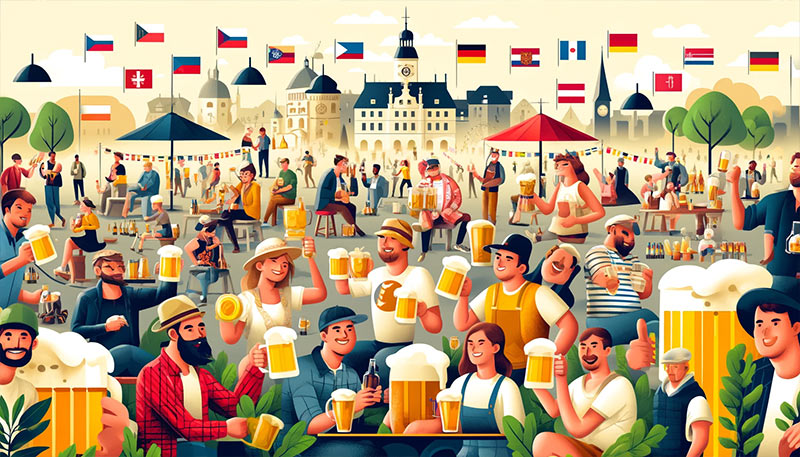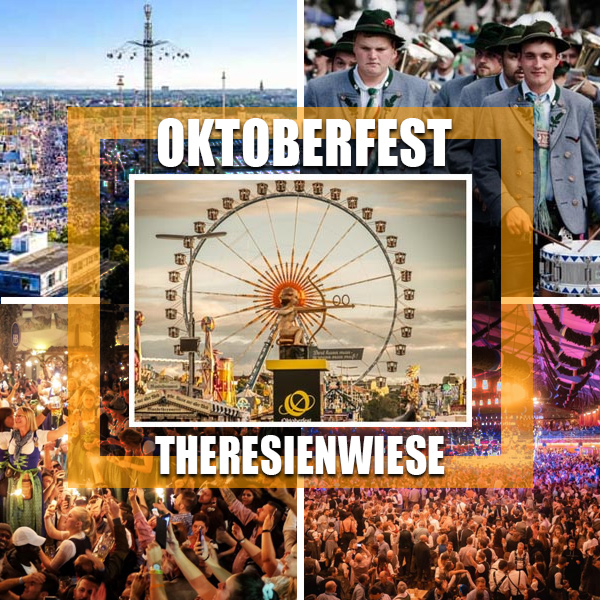Beer is one of the most popular alcoholic beverages worldwide, enjoyed in social settings, cultural rituals, and personal relaxation alike. While its roots trace back thousands of years, beer's global appeal has only grown stronger with time. This article explores the countries where beer consumption is the highest, highlighting cultural, economic, and social factors that contribute to these drinking habits.
1. The Czech Republic: Beer Enthusiasts Extraordinaire
Per Capita Consumption: Over 140 liters per year
The Czech Republic consistently tops the charts for beer consumption. The country has a rich brewing history, with Pilsner-style lagers originating here. Beer is ingrained in Czech culture, often cheaper than bottled water in restaurants. Czech beer gardens, pubs, and festivals are a testament to the nation's deep-rooted beer tradition.
Cultural Significance:
- Pilsner Urquell: The world’s first pale lager.
- Beer Spas: Unique wellness experiences involving beer baths.
2. Germany: The Land of Beer Festival
Per Capita Consumption: Approximately 100 liters per year
Germany is synonymous with beer, from its famous Oktoberfest in Munich to the purity law (Reinheitsgebot) that has influenced brewing standards since 1516. German beer culture is characterized by a variety of beer styles, including lagers, pilsners, and wheat beers
Cultural Significance:
- Oktoberfest: The world’s largest beer festival
- Beer Gardens: Outdoor areas where beer and food are served.
3. Austria: A Tradition of Lager and Pilsne
Per Capita Consumption: Around 100 liters per year
Austria, with its alpine scenery and historic cities, also boasts a significant beer-drinking population. Austrian beer culture is closely related to that of Germany, with a strong preference for lagers and pilsners.
Cultural Significance:
- Stiegl and Gosser: Popular Austrian beer brands.
- Heurigen: Traditional taverns where local food and drink, including beer, are served.
4. Poland: Rising Beer Consumption
Per Capita Consumption: Approximately 98 liters per year
Poland has seen a steady increase in beer consumption over the years. The country has a growing craft beer scene, with many local breweries producing a wide range of beer styles. Traditional Polish lagers remain popular, but there is also a growing interest in more diverse beer offerings.
Cultural Significance:
- Zywiec and Tyskie: Major beer brands.
- Craft Beer Revolution: Increasing popularity of microbreweries.
5. Ireland: A Legacy of Stout
Per Capita Consumption: Around 98 liters per year
Ireland is globally known for its dark, rich stouts, with Guinness being one of the most iconic beer brands in the world. Beer, particularly stout, is an integral part of Irish culture and social life.
Cultural Significance:
- Guinness: World-famous stout.
- Irish Pubs: Renowned for their convivial atmosphere and live music.
6. Romania: Emerging Beer Culture
Per Capita Consumption: Around 94 liters per year
Romania's beer consumption has been on the rise, with both local and international beers gaining popularity. The country has a mix of large commercial breweries and a growing number of craft breweries.
Cultural Significance:
- Ursus and Timisoreana: Leading Romanian beer brands
- Craft Beer Boom: Increasing interest in craft beer varieties.
7. Spain: Beer with Tapas
Per Capita Consumption: Approximately 88 liters per year
Spain's beer culture is often overshadowed by its wine heritage, but beer is a popular choice, especially in the form of cañas (small glasses of beer) enjoyed with tapas. Spanish beers are typically light lagers, ideal for the country’s warm climate.
Cultural Significance:
- Mahou and Estrella Damm: Popular Spanish beer brands.
- Tapas Culture: Beer paired with small plates of food.
8. The United States: Diverse Beer Landscape
Per Capita Consumption: Around 74 liters per year
The United States has a dynamic beer culture, marked by a robust craft beer movement. From pale ales to IPAs, stouts to sours, the variety and creativity in American beer are unparalleled.
Cultural Significance:
- Craft Beer Revolution: Thousands of microbreweries across the country.
- Beer Festivals: Events like the Great American Beer Festival celebrate beer diversity.
Conclusion
Beer consumption around the world varies widely, influenced by historical, cultural, and economic factors. The Czech Republic, Germany, Austria, and Poland lead in per capita beer consumption, reflecting deep-seated beer traditions. Countries like Ireland, Romania, Spain, and the United States also showcase unique beer cultures and growing markets. Whether through traditional brewing methods or innovative craft beer trends, beer continues to be a beloved beverage worldwide, bringing people together across cultures and continents.


